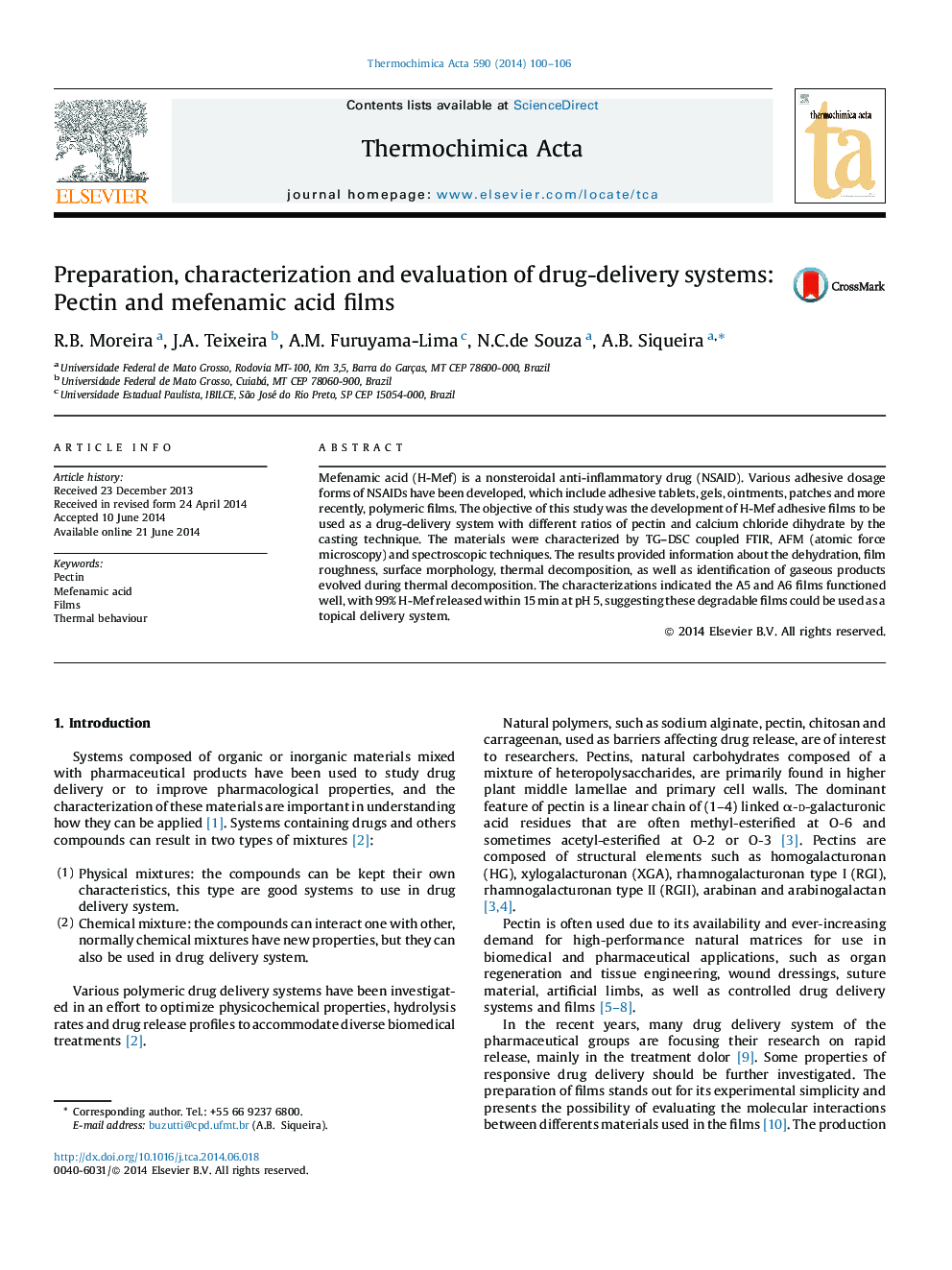| کد مقاله | کد نشریه | سال انتشار | مقاله انگلیسی | نسخه تمام متن |
|---|---|---|---|---|
| 673236 | 1459494 | 2014 | 7 صفحه PDF | دانلود رایگان |
• The films were prepared and characterized by FTIR, TG–DSC/FTIR and AFM microscopy.
• The results provided information on the composition, dehydration, thermal stability, thermal decomposition.
• DSC results of CaHCl shows two overlapping endothermic peaks.
• The AFM image shows great similarity for A5 and A6 films.
• A5 and A6 films functioned well as a topical delivery system.
Mefenamic acid (H-Mef) is a nonsteroidal anti-inflammatory drug (NSAID). Various adhesive dosage forms of NSAIDs have been developed, which include adhesive tablets, gels, ointments, patches and more recently, polymeric films. The objective of this study was the development of H-Mef adhesive films to be used as a drug-delivery system with different ratios of pectin and calcium chloride dihydrate by the casting technique. The materials were characterized by TG–DSC coupled FTIR, AFM (atomic force microscopy) and spectroscopic techniques. The results provided information about the dehydration, film roughness, surface morphology, thermal decomposition, as well as identification of gaseous products evolved during thermal decomposition. The characterizations indicated the A5 and A6 films functioned well, with 99% H-Mef released within 15 min at pH 5, suggesting these degradable films could be used as a topical delivery system.
Journal: Thermochimica Acta - Volume 590, 20 August 2014, Pages 100–106
